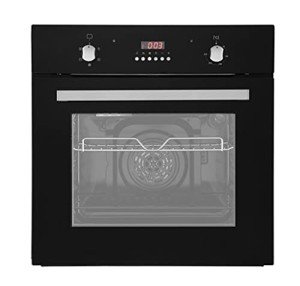The Rise of Built-In Ovens: A Seamless Approach to Modern Cooking
In contemporary cooking areas, where design aesthetic appeals blend perfectly with performance, one device stands apart as a true game changer: the built-in oven. As property owners and chefs alike continue to seek ingenious services that improve their cooking experience, built-in ovens have actually ended up being increasingly popular. This short article checks out the advantages, considerations, and trends surrounding built-in ovens, highlighting why they are an important feature in modern cooking areas.
What is a Built-In Oven?
A built-in oven is a cooking area device developed to be integrated into the kitchen cabinetry of a kitchen area instead of standing alone. Unlike traditional freestanding ovens, which can be moved and placed anywhere, built-in ovens been available in various styles and sizes to fit particularly within designated spaces. Available in single or double configurations, these ovens provide a structured look that complements modern cooking area designs.
Advantages of Built-In Ovens
1. Space-Saving Design
One of the most attractive benefits of built-in ovens is their space-saving design. By integrating the oven into cabinets, you can release up valuable counter and flooring area. This is especially useful in smaller sized cooking areas, where making the most of space is important. Built-in ovens can be set up at eye level, making them more accessible and lowering the need to flex down.
2. Visual Appeal
Built-in ovens contribute to a streamlined and cohesive kitchen design. Available in various surfaces-- such as stainless-steel, black, white, and custom cabinets-- they can mix perfectly into the total decoration. This aesthetic appeal enhances the cooking area's visual harmony and raises the area, developing a modern-day and sophisticated environment.
3. Boosted Functionality
Many built-in ovens come equipped with innovative cooking innovations, such as convection cooking, steam ovens, and clever functions. These improvements permit flexible cooking alternatives, making it easier to accomplish professional-level results in the house. Smart built-in ovens can even connect to Wi-Fi, allowing users to control the oven remotely, receive notices, and gain access to a range of cooking programs and dishes.
4. Enhanced Ventilation
Because built-in ovens can be integrated with kitchen area hoods and ventilation systems, they can assist keep better air quality and reduce cooking smells. This is especially significant for those who love to cook with aromatic spices and ingredients, as an effective ventilation system can keep the kitchen area comfortable and welcoming.
5. Modification Options
Built-in ovens provide a large range of customization alternatives to match specific cooking styles and needs. From professional-grade appliances with multiple cooking modes to compact styles for smaller sized cooking areas, property owners can choose the oven that fits their particular requirements. Lots of makers also offer personalized front panels, permitting you to match the oven's appearance to your cabinetry for a truly combined look.
Factors to consider When Choosing a Built-In Oven
While built-in ovens have lots of benefits, there are necessary factors to consider to keep in mind before purchasing:
1. Price
Built-in ovens typically include a higher cost than their freestanding counterparts due to their design and installation requirements. It's crucial to aspect in both the cost of the oven and any extra costs related to cabinetry adjustments or setup.
2. Setup Requirements
Installing a built-in oven typically requires expert support, specifically if you require to customize existing kitchen cabinetry. Make sure that you consider any expenses connected with installation, including labor and possible cabinetry adjustments.
3. Size and Dimensions
Before purchasing a built-in oven, measure the designated area precisely to ensure an appropriate fit. Built-in ovens come in different sizes and setups, so selecting one that lines up with your needs and cooking area design is essential.
4. Way of life and Usage
Consider your cooking routines and requires when choosing a built-in oven. If you frequently host big gatherings, a double oven might be more beneficial. On the other hand, if you have a compact cooking area, a single-wall oven may be sufficient.
Patterns in Built-In Ovens
The kitchen appliance market is constantly progressing, and built-in ovens are not exempt from emerging trends. Some existing trends include:
Smart Technology Integration: With the rise of clever home technology, built-in ovens now frequently include connection options. This permits users to keep track of cooking progress and adjust settings via mobile apps.

Energy Efficiency: As sustainability becomes a concern, lots of producers are buying energy-efficient built-in ovens that decrease energy consumption while preserving efficiency.
Multi-functional Designs: Built-in ovens now provide features such as air frying, slow cooking, and steaming, offering flexibility that satisfies a wide variety of cooking methods.
Conclusion
Built-in ovens certainly represent a best blend of design, function, and benefit in today's kitchens. As more property owners select this modern-day solution, the focus moves to producing a cooking space that is as visually pleasing as it is useful. Whether talks about it are developing a brand-new home or redesigning your kitchen, thinking about a built-in oven might elevate your culinary experience and change your cooking area into a trendy and functional haven. With view website of choices available and ongoing innovations in technology, built-in ovens remain a standout option for both amateur cooks and cooking enthusiasts alike.
